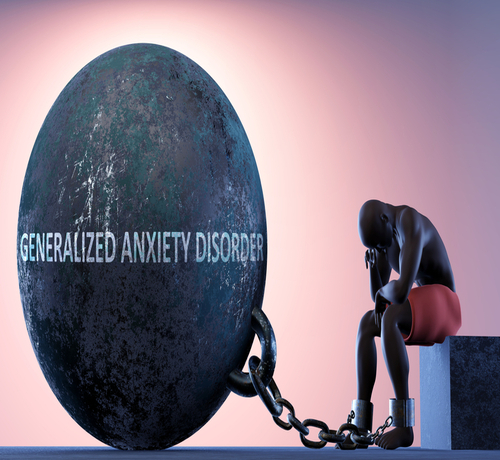
What Is Generalized Anxiety Disorder?
Generalized anxiety disorder (or GAD) is marked by excessive, exaggerated anxiety and worry about everyday life events for no obvious reason. People with symptoms of generalized anxiety disorder tend to always expect disaster and can’t stop worrying about health, money, family, work, or school.
Everyone feels anxiety now and then — and there can be good reasons why. But in people with GAD, the worry is often unrealistic or out of proportion for the situation. Daily life becomes a constant state of worry, fear, and dread. Eventually, anxiety can even dominate a person’s thinking so much that they find it hard to do routine things at work or school, socially, and in their relationships. But there are treatments to ease anxiety so it’s not running your life.
Everyone feels anxiety now and then — and there can be good reasons why. But in people with GAD, the worry is often unrealistic or out of proportion for the situation. Daily life becomes a constant state of worry, fear, and dread. Eventually, anxiety can even dominate a person’s thinking so much that they find it hard to do routine things at work or school, socially, and in their relationships. But there are treatments to ease anxiety so it’s not running your life.
How Common Is GAD?
Nearly 4 million adult Americans, or about 2%, have GAD during the course of a year. It most often begins in childhood or adolescence but can begin in adulthood. It is more common in women than in men.
What Are the Symptoms of GAD?
GAD affects the way a person thinks, and it can lead to physical symptoms. Mental health professionals use a standard set of criteria to diagnose GAD. Those symptoms can’t be caused by a medical problem or other condition and last at least 6 months. Those criteria include:
- Excessive, ongoing worry and tension.
- Unrealistic view of problems.
- Restlessness or a feeling of being “edgy”.
- Trouble concentrating.
- Tiring easily or being fatigued.
- Increased crankiness or irritability.
- Trouble sleeping.
- Muscle tension or muscle aches and soreness.

How Is GAD Diagnosed?
If you have symptoms of GAD, your doctor will begin an evaluation by asking questions about your medical and psychiatric history. You may also get a physical exam. Lab tests don’t diagnose anxiety disorders, but some can help doctors check for any physical illness that might be causing the symptoms.
The doctor bases their diagnosis of GAD on reports of how intense and long-lasting the symptoms are, including any problems with daily life caused by the symptoms. The doctor then determines whether the person has a specific anxiety disorder or generalized anxiety disorder.
For someone to be diagnosed with GAD, symptoms must interfere with daily living and be present for more days than not for at least 6 months.
For someone to be diagnosed with GAD, symptoms must interfere with daily living and be present for more days than not for at least 6 months.

What Are the Causes and Risk Factors for GAD?
Experts don’t know the exact causes of generalized anxiety disorder. Several things — including genetics, brain chemistry, and environmental stresses — appear to contribute to its development.
Genetics
Some research suggests that family history plays a part in making it more likely that a person will have GAD. This means that the tendency to develop GAD may be passed on in families. But no anxiety genes have been identified, and families may also pass down the tendency through lifestyle or environment.
Brain chemistry
This is complex. GAD has been linked to problems with certain nerve cell pathways that connect particular brain regions involved in thinking and emotion. These nerve cell connections depend on chemicals called neurotransmitters that send information from one nerve cell to the next. If the pathways that connect particular brain regions don’t work well, problems related to mood or anxiety may result. Medicines, psychotherapies, or other treatments that are thought to work on these neurotransmitters may improve the signaling between circuits and help to improve symptoms related to anxiety or depression.
Environmental factors
Trauma and stressful events such as abuse, the death of a loved one, divorce, and changing jobs or schools may contribute to GAD. The condition can also worsen when stress feels out of hand. The use of and withdrawal from addictive substances (including alcohol, caffeine, and nicotine) can also worsen anxiety.

